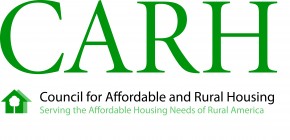- November 2022
- October 2022
- September 2022
- August 2022
- July 2022
- June 2022
- May 2022
- April 2022
- March 2022
- February 2022
- January 2022
- December 2021
- November 2021
- October 2021
- September 2021
- August 2021
- July 2021
- June 2021
- May 2021
- April 2021
- March 2021
- February 2021
- January 2021
- December 2020
- November 2020
- October 2020
- September 2020
- August 2020
- July 2020
- June 2020
- May 2020
- April 2020
- March 2020
- February 2020
- January 2020
- December 2019
- November 2019
- October 2019
- September 2019
- August 2019
- July 2019
- June 2019
- May 2019
- April 2019
- March 2019
- February 2019
- January 2019
- December 2018
- November 2018
- October 2018
- September 2018
- August 2018
- July 2018
- June 2018
- May 2018
- April 2018
- March 2018
- February 2018
- January 2018
- December 2017
- November 2017
- October 2017
- September 2017
- August 2017
- July 2017
- June 2017
- May 2017
- April 2017
- March 2017
- February 2017
- January 2017
- December 2016
- November 2016
- October 2016
- September 2016
- August 2016
- July 2016
- June 2016
- May 2016
- April 2016
- March 2016
- February 2016
- January 2016
- December 2015
- November 2015
- October 2015
- September 2015
- August 2015
- July 2015
- June 2015
- May 2015
- April 2015
- March 2015
- February 2015
- January 2015
- December 2014
- November 2014
- October 2014
- September 2014
- August 2014
- July 2014
- June 2014
- May 2014
- April 2014
- March 2014
- February 2014
- January 2014
HUD Releases Income Limits for Fiscal Year 2015
CARH’S BROADCAST E-MAIL – Regulatory Alert
March 9, 2015
In December, CARH informed members that due to the 2014 Consolidated Appropriations Act (P.L 113-76) ,which defines extremely low-income families as very low-income families whose income does not exceed the greater of the federal poverty guidelines as published by the Department of Health and Human Services (HHS), HUD had decided to delay the Fiscal Year (FY) 2015 Income Limits until HHS published the 2015 poverty guidelines so the Income Limits would not have to be adjusted twice.
On March 6, 2015, the Department of Housing and Urban Development (HUD) released FY 2015 income limits. These income limits went into effect on the same day. Click here for links to median family income, income limits and accompanying information and tables from HUD.
Income limits are set by HUD to determine the eligibility of applicants for HUD’s assisted housing programs. Section 8 Fair Market Rent (FMR) area definitions are used to develop median family income estimates for each metropolitan area and non-metropolitan county. HUD income limits are calculated for every FMR area with adjustments for family size and for areas that have unusually high or low income-to-housing-cost relationships.
Low-income families are defined as families whose incomes do not exceed 80 percent of the median family income for the area. Very low-income families are defined as families whose incomes do not exceed 50 percent of the median family income for the area. Income limits for non-metropolitan areas may not be less than limits based on the State non-metropolitan median family income level. The Secretary of Agriculture is to be consulted prior to establishing income limits for rural areas, since these limits also apply to certain Rural Development programs.
Under the Housing and Economic Recovery Act of 2008 (Public Law 110-289), income limits used to determine qualification levels as well as set maximum rental rates for projects funded with Section 42 Low-Income Housing Tax credits (LIHTC) or Section 142 tax exempt private equity bonds are now calculated and presented separately from the Section 8 income limits. These projects should use the Multifamily Tax Subsidy Project Income Limits which can be found by clicking here.
Beginning with FY2010 income limits, HUD eliminated its hold harmless policy but limits all annual decreases to five percent and limits all annual increase to five percent or twice the change in the national median family income, whichever is greater. HOME Investment Partnerships program (HOME) rents continue to be held harmless and income limits for rural housing programs continue their current hold harmless policy at the request of the Rural Housing Service because these limits are based on area definitions and program rules specified by the Rural Housing Service.





